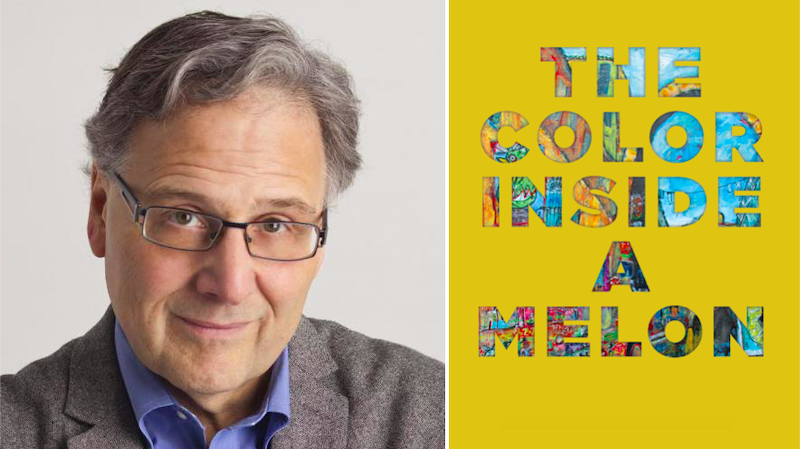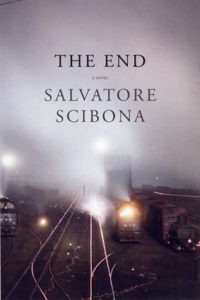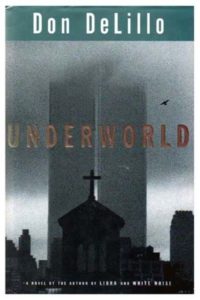
John Domini’s The Color Inside a Melon is published today. He shares five novels of Italian-American immigration, noting, “The Great American Novel, that creature of legend, could only be a novel of immigration. Newcomers—willing or otherwise—created this catchall of a country, and the ongoing wrangle of assimilation defines both the Bohemians of Willa Cather’s My Antonìa, published 1918, and the Nigerians of Chimamanda Ngozi Adichie’s Americanah, which appeared a century later. So when Jane Ciabattari asked me for a short list of great immigrant novels, I needed to think smaller. I kept my choices close to home, as the son of an immigrant out of Southern Italy.

The Fortunate Pilgrim by Mario Puzo
Puzo of course gave us The Godfather, still the elephant in the room when it comes to novels of Italian America. This earlier beauty includes a few Mafia figures, part of the landscape for an extended immigrant family in lower Manhattan, in the decade or so before World War Two. Their struggle to live honorably in this godforsaken New World, Mannagia America, is distinguished especially by the woman keeping the brood together, Lucia Santa. Even a detail like how she prepares coffee can prove Lucia a heroine.
Jane Ciabattari: Puzo’s autobiographical novel about immigrants in Hell’s Kitchen predates The Godfather by five years. In the preface to a reissue, Puzo says he modeled the ruthless Don Corleone after his mother, Maria, who inspired Lucia Santa. ”Whenever the Godfather opened his mouth,” he writes, ”in my own mind I heard the voice of my mother.” There are so many points at which Puzo reveals the steely harshness of her love, including that moment when she puts institutional walls between her husband and his family forever. At which moments do you think she most resembles Don Corleone?
John Domini: The surprising strength of The Godfather is the humanity of its Mafiosi. Don Corleone isn’t simply a sociopath, and Lucia Santa reveals the same sort of intriguing, engaging conflicts at a number of junctures in Fortunate Pilgrim. The scenes you allude to come about halfway through, as Lucia must contend with her husband Frank’s deepening pathology. One of the crews who dug the subways, he’s been left addled by an accident, and one night he erupts in a rage no less than murderous. Lucia’s response feels heroic precisely because it’s so complex. She stands up to the man even as she hustles their children out of harm’s way, then later reins in the police who responded to the uproar. She shows the same pain and resourcefulness during the subsequent visit to the hospital, when at last she has Frank committed.

The End by Salvatore Scibona
This is another portrait of family and community, in this case inner Cleveland in the 1950s. The neighborhood’s Italianità is cracking apart as African-Americans move in, and though the novel describes this “end” with a smart mouth, quick to skewer hypocrisy, it never lacks for a sympathetic touch, especially concerning another larger-than-life immigrant woman, Mrs. Marini.
JC: From its opening lines, which describe the inner world of Rocco, the baker, Scibona’s story of one momentous day in 1953 in Cleveland’s Elephant Park unfolds in layers of gorgeous rhythmic and poetic language. Of Mrs. Marini, who performs abortions in her basement, advises Rocco on his travels, and plans to make Lina her apprentice, he writes, “She speculated and spied and picked and plotted.” Scibona flashes back to the past—in Mrs. Marini’s case, meeting her husband in 1876 in her village, Lazio, at age sixteen, and having a moment of existential intuition driving along the Cuyohoga River Valley sixty years later. How do you find these flashbacks amplify the action on the Day of the Assumption in 1953?
JD: Consider the title: The End. Scibona’s vision is greater than a single urban neighborhood at the beginning of the Eisenhower administration. His novel also considers the roots of that community, the American Dream that first drew these people over, and then the ways it confounded the dreamers, resulting finally in a second diaspora, as a formerly tight-knit community fractured and scattered into the suburbs and beyond. Within this larger cycle of fleeing, settling, and then breaking to bits again is Mrs. Marini’s relationship with a woman of the next generation, Carmelina, whose own unease carries her away, for a long stretch, to Wyoming. On Lina’s return, the pages of crackling dialogue between her and Mrs. Marini amount to a brilliant, crack-voiced duet on our contrary impulses towards escape and sanctuary.

Paper Fish by Tina De Rosa
De Rosa too is haunted by the breakup of the old neighborhood, in this case Chicago’s, and by a central woman figure, Carmolina. Yet her novel risks more than most, decidedly experimental; its plot comes together in fugal reiterations, its urban landscapes feel impressionistic. I find the result fascinating and profound, but the book at first suffered vicious neglect; it had to be rescued by loyal readers.
JC: In particular I admire De Rosa’s artfulness in crafting Carmolina’s inner self, and her shifts through time, including into the future. Can you explain how Paper Fish came to be republished for a wider audience?
JD: Oh, this is a wonderful story! Like Scibona’s, De Rosa’s novel prizes subtleties of character and mood over the drive of plot, and this combined with its initial appearance on a very small Chicago press meant that, for decades following its 1980 publication, almost no one had heard of it—except a dedicated small circle, mostly Italian-American, who kept bringing the book up in their scholarship. In a few cases, Xerox copies circulated, and one critic, Fred Gardaphé, was so impressed by Paper Fish he would track it down in any form he could find, and give it to friends. Eventually Gardaphé helped arrange republication on a more established press (The Feminist Press), and that the book which remains in print.

Where She Has Gone by Nino Ricci
In fact, I could list Ricci’s entire trilogy of the Innocente family, postwar immigrants to Toronto. Together, the three books may comprise the Great Italian-American novel. But my favorite is this, the finale, concerned with the first generation raised on our side of the Atlantic. As a couple of young adults teeter, agonized, between embracing and rejecting their Molisano past, the sister Rita looms like a an alternative Madonna, educated and liberated.
JC: Vittorio Innocente’s quest to find his sister by another father and follow through on his father’s will is both an uncovering of family secrets and family ties. How does his journey back to their village of origin in Italy set up the conclusion?
JD: Naturally, I’m reluctant to give away too much of this splendid novel’s plot. I can say that, for Vittorio, it concludes a three-part tragedy of the uprooted. When it comes to intimacy, he’s broken, and his attempts to reconnect either stall, unfinished, or take destructive form. The search, the need, carries him from Toronto, where he’s marking time after college, to the Molise farm town his parents came from, but there too he can’t seem to find answers and forge attachments. Importantly, though, the same doesn’t go for his half-sister Rita. Like all the major women figures of this trilogy, she achieves a kind of transcendence, almost mythic.

Underworld by Don DeLillo
DeLillo always has a lot going on, but the core of this hefty tome lies remarkably close to the author’s cuore, Italian for “heart.” Its protagonist has nothing to do with the Mafia and his name doesn’t even end in a vowel, but the adult Nick Shay longs for reconnection with his Arthur Avenue past, with “the old, loud Bronx.” In the recurring companion story that starts at the Giants-Dodgers playoff of 1951, Thompson’s home run ball comes to seem a lot like Proust’s madeleine—to hold it in our hands puts it back in the Old World.
JC: “He speaks in your voice, American, and there’s a shine in his eye that’s halfway hopeful.” From that opening line, DeLillo marches through half a century of American history, with idiosyncratic swerves and brilliant setpieces. And that baseball… Do you recall your reaction upon your first reading of Underworld?
JD: Ah, an apt note to end on— because like Cristoforo Columbo before me, I didn’t know the great continent to which I’d come. My first encounter with Underworld was its magnificent preface, “Pafko at the Wall,” which appeared ahead of the book, in Harper’s. That knocked me out, and it remains a brilliant sustained piece, one of the Himalayan peaks of DeLillo’s generation. But when I first took up Underworld itself, maybe five years later, I found it sort of scattered. I missed the intensity of the moment that pervades the opening. I wound up giving the whole what I guess you’d call a “skim,” and I remained a dunderhead about it for a good couple of decades thereafter. Only thanks to a DeLillo conference in New York, in 2017, did I take up the text again, and thank God I did. Somehow, some way, I’d been immune to the bruising depth of those Bronx chapters, and so much else—I’d missed a masterpiece.

